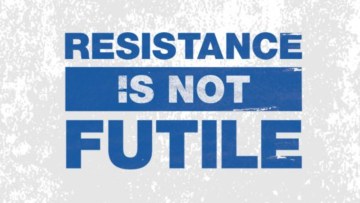Establishment Advice from John Cussans
03.08.2020
Normally I’d be on tour aboard the Blackgrass Bus, visiting demonstration sites, field trials and, of course, the trade events. I’d be talking with experts and growers, discussing the challenges on-farm this season.
While that’s not possible, I have been doing many of same things (from the comfort of my home!).
We recently held one of the first webinars on the BASF Real Results Virtual Farm. John Cussans, weed biology specialist, joined me to present and discuss recent research on mitigating grass-weed pressure.
Packed full of trials data, we explored everything from the latest resistance findings to the impact of cultivations and spring cropping.
But what does this mean for growers and how does it relate to in-field conditions?
It’s a difficult question to answer. There are so many different situations across the country that applying the advice needs a field-by-field approach. My colleague, Rory Galloway, BASF Agronomy Manager in Yorkshire summarised the situation neatly when he said:
“It’s been a very challenging season and we’re in one the worst affected parts of the country; if you don’t have black-grass then you’ve probably got rye-grass.
Many of those that correctly delayed drilling, due to grassweed issues, didn’t get an autumn crop in the ground this year. Some then moved onto spring barley, which subsequently got hit by the hot, dry weather.
Those that drilled earlier, may have jumped the gun and had the worst of both worlds; they’d little to no time to create stale seedbeds, then the rain came and prevented pre-em applications. In this situation, some growers will have had to spray
off parts of fields this spring, to deal with the resulting black-grass and prevent unmanageable levels of seed return.
There are a lucky few though, that due to soil type and weather conditions, did delay drilling and get a pre-em on. In many of these cases, they have a pretty clean crop.”
MAPPING AND MONITORING
Mapping and monitoring black-grass, in particular, was one of John Cussans’ key points. Without knowing where viable seed lies, it’s very hard to select the most appropriate weed management strategy. “For now, the priority has to be monitoring and mapping problems in this seasons’ crops to inform next year’s decision making,” said John.
“Keep your eye on other grass-weed populations too,” warned John, noting that changing agronomic practices to control black-grass will inevitably select for other grass-weed species, some of which are growing herbicide resistance.
LATEST RESISTANCE RESEARCH
John summarised this section of the webinar neatly with the line: “there is ubiquitous and widespread resistance in black-grass.”
80% of black-grass samples from across the country showed resistance to mesosulfuron, fenoxaprop and cycloxydim.
But herbicide resistance goes beyond black-grass and post-emergence products. John confirmed shifts in flufenacet sensitivity in field populations of black-grass. And Italian rye-grass is showing variable sensitivity to fluenacet and pendimethalin. 50% of the Italian rye-grass sample also had resistance to Axial (pinoxaden) and Atlantis (mesosulfuron and iodosulfuron).
DRILLING DATES – AUTUMN
Concerned about a knee-jerk reaction following this wet autumn/winter, John had a call-to-arms: delay drilling autumn crops to mid-October.
“On average, every week drilling is delayed in autumn there’s a 15% decrease in black-grass. We’ve not yet had a year when delaying drilling from September to October hasn’t reduced black-grass plants,” observes John.
“Delaying drilling coincides with better performance of pre-em herbicides – the increased chance of rainfall, increases the likelihood of conditions facilitate improved take-up of residuals.”
The messages were reinforced by the results of a joint BASF and NIAB trial at Hardwick. “You can drill mid-September and apply Crystal (flufenacet and pendimethalin), Hurricane (diflufenican), Lexus (flupyrsulfuron) and Avadex (tri-allate), or wait 3 or 4 weeks until mid-October and just apply Crystal (flufenacet and pendimethalin), and get the same outcome.”
“You can’t spend your way out of early drilling,” John concludes.
In contrast, delaying drilling until mid-November when John admits “conditions were poor”, saw reduced crop competition and more black-grass plants surviving. “Those survivors produced more heads than the black-grass plants in the mid-October drilled plots.”
“After mid-October stop worrying about the weeds and start worrying about the crop,” he says.
CULTIVATION CHOICE
“If you’ve no fresh seed return this year – think about the seed bank,” advised John. “One season of good control isn’t enough of a reset.”
Drawing on another trial at Hardwick, John demonstrated how cultivations effect black-grass numbers. Where there’s fresh seed on the surface, ploughing reduced head counts by 80-94%. Where all the black-grass was in the seedbank, inverting the soil produced 34-40% control.
DRILLING DATES – SPRING
When it comes to spring crops, John showed how a further reduction in black-grass can be obtained from delayed drilling. The difference between planting in mid-February and mid-April was around 80 plants/m2.
“However, there is a trade-off with crop performance,” acknowledged John. “The “sweet spot” was around mid-March, where black-grass seedlings were reduced to nearly 40 plants/m2 with the spring oats yielded nearly 6t/ha and spring barley, 6.5t/ha.”
FINAL THOUGHTS
John rounded up the presentation with a powerful graph demonstrating the potential cost of relying on herbicides alone.
“Always think beyond control in the current crop.”
“70% control is relatively cost-effective to achieve with herbicides. It’s getting that 97-98% control, where you’re sustaining or reducing populations, that becomes disproportionality expensive with herbicides alone,” he says.
The graphs – which is based on real data from all NIAB TAG trials – shows how 97% can require a programme costing £300/ha, relying predominantly on pre-ems with an autumn applied contact herbicide.
“It’s not just black-grass, with all weeds we mustn’t become over-reliant on herbicides. Effective management comes from all the whole system.”
If this blog has piqued your curiosity, you can view the webinar on the BASF Real Results Virtual Farm. You can also ask questions about the specific situation on your farm.
You’ll also find upcoming events. On 21st July, Tom Robinson will be joining me to talk about nest spraying practice.
To register for the events and visit the farm, go to north_east www.basfrealresultsfarm.com.


